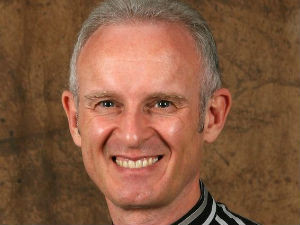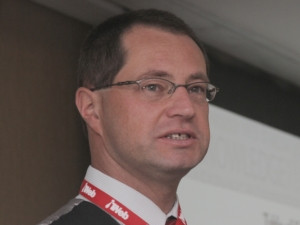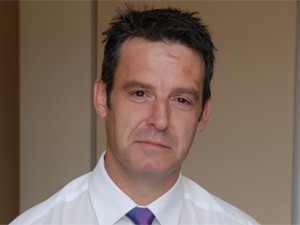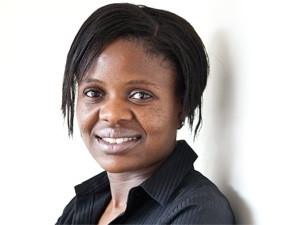
SA's telecommunications industry has been inching towards global standards (with a little help from the leapfrog effect) for some years now - and this year promises to not only perpetuate that momentum, but to accelerate it.
Some of our country's top telecoms experts have taken the customary glimpse at the industry's crystal ball for 2014 and concluded that SA's WiFi and long-term evolution (LTE) prospects get a resounding thumbs-up.
It is true, SA undoubtedly faces its challenges - and may fall short compared to many of its international counterparts when it comes to technology - but analyst predictions paint an optimistic picture of progression in the coming year.
Industry observers point out that most of the delays in the sector are rooted in government dithering and weighty regulation. Many are of the opinion that if the Department of Communications and Independent Communications Authority of SA (ICASA) could just turn their mosey into a hustle and get moving on some of the crucial issues keeping technology glued, SA's telecoms terrain would start looking a lot more promising.
But for now it seems SA ICT will have to settle for slow progress. At least it is not a case of no progress and local pundits are focusing on that.
LTE outlook
LTE - the new-generation wireless broadband technology that started out more as a buzzword than an experience in SA in late 2012 - began to take root in the country last year.
In 2014, SA's industry observers and data-hungry consumers hope to see LTE - commonly referred to as "4G" - sprout beyond its fledgling phase into a viable alternative to the often challenge-laden technology of asymmetric digital subscriber line (ADSL).
This month the Global Mobile Suppliers' Association (GSA) released the latest update to its LTE report. GSA president Alan Hadden says the association forecasts that there will be at least 350 LTE networks in commercial service by the end of 2014.
But what about SA - a country in the midst of a mobile explosion and in need of faster, more affordable mobile Internet access?
Analysts say while SA's operators - mobile duopoly Vodacom and MTN in particular - have LTE deployment high on their priority lists, it is equally highly-placed on their frustration lists.
World Wide Worx MD Arthur Goldstuck says SA is still stuck in the middle of a "spectrum no man's land", with high-demand spectrum - ideal for LTE - not yet allocated. "[In addition to this,] existing spectrum that is intended for 3G [is being] refarmed for LTE."
He says there are high hopes that LTE spectrum will be allocated before the elections (tagged for April/May), as it is one of communications minister Yunus Carrim's priorities, "but this is one area where the regulator has not covered itself in glory".

Another common sentiment among industry observers is that LTE deployment in SA is both recent and slow - but also inevitable.
One such observer is Dobek Pater from Africa Analysis, who comments: "The large operators (Vodacom and MTN) have been deploying their LTE networks, however, at a slow pace."
He notes that deployment is taking place in the large metros - where LTE is needed and can be taken advantage of immediately, and where it will generate the quickest return on investment.
Pater echoes Goldstuck's remark on the spectrum issue: "The deployment has been limited due to the limited spectrum currently available to the operators. Part of the problem is that the operators need to refarm the spectrum they currently have access to, which probably results in poorer quality services on the 3G network."
Another reason for reluctance, he says, is that operators may not want to deploy LTE too quickly (using the currently available spectrum), if they may not be able to provide true LTE services over the new network due to spectrum frequency constraints.
"Quicker deployment is expected only once the so-called LTE spectrum has been awarded by the Independent ICASA. The challenge is that the new spectrum will be awarded in different frequencies than the currently used spectrum (1 800MHz and 2 100MHz) - which means operators would possibly have to run two LTE networks in parallel."
Ovum analyst Richard Hurst says it is still early days for LTE in SA. That said, he notes the country is seeing an increase in the number of LTE devices on the market, as well as a rapid rollout on the part of mobile network operators.
Once the issue of spectrum has been sorted out, he says, LTE is likely to gain significant traction in the local market.
Pater says he sees the active advancement of LTE as being imperative for SA. "LTE is a good alternative to ADSL, which is problematic in SA because the copper network is limited (and ADSL has a limit of about 5km from the exchange before the signal degrades too much) and the copper cables continue to be stolen without replacement.
"Fibre will not be feasible in many residential areas and some business areas due to the high cost of deployment. LTE can fill the gap and is a good technology solution for SMEs and the high-end consumer market as a fixed-wireless solution. It is also mobile (or normally used as 'nomadic'), therefore, provides greater flexibility than an ADSL connection."
He says, while the uptake of newer ADSL technologies like ADSL2+ and very-high-bit-rate digital subscriber line has been slow - indicating many users do not quite know what to do with the available bandwidth speeds (and also taking cost into consideration) - the demand for data (and fast data) connectivity is growing.
"LTE can provide the type of fast broadband solution to many users (business and residential) to drive efficiencies."

Goldstuck says LTE may not be a necessity at this stage, but its absence does hold back the evolution of communications, making SA an increasingly less competitive country and economy.
According to a World Bank report on broadband in developing countries, every 10% increase in broadband connectivity boosts economic growth by 1.38%.
Local LTE map
Vodacom - SA's largest mobile operator by market share and the first to deploy commercial LTE in SA - says, as at the end of September, that it had increased LTE coverage to over 720 sites across the country, with coverage in most of the major cities in SA.
"Part of Vodacom's ongoing network investment strategy, which has seen the company invest over R28 billion in its South African network over the past five years, has been to expand 3G coverage to everywhere we have voice (2G). To date, close on 90% of the population has 3G coverage."
The operator says it has also been upgrading all of its existing base stations with new 3G equipment that is software upgradable to LTE. "This means we'll be ready to have LTE up with the flick of a switch when we get spectrum."
According to Vodacom, there are around 550 000 LTE-capable devices on the network in areas where the operator has LTE coverage.
Second operator MTN, which followed its red rival closely, launching a commercial LTE network just short of two months after it, says it is continually investing in "better and faster network infrastructure".
MTN CTO Eben Albertyn says: "We are well on our way to rolling out LTE across the entire country and have successfully implemented LTE in Durban, Johannesburg, Pretoria, Cape Town and Bloemfontein - with more sites to go live in 2014."
Albertyn says the operator has modernised most of its base stations in preparation for LTE and has refarmed 2 x 10MHz in 90% of its sites to provide faster connection speeds.
Up-and-coming third mobile operator Cell C has ongoing commercial LTE trials on the go in Johannesburg, Pretoria, Durban and Cape Town.
Cell C's acting CEO Jose Dos Santos says the operator is planning to prepare a large percentage of its sites - especially in the Gauteng region - to be LTE-ready during the course of this year.
"The focus, however, is on HSPA and full commercial LTE plans will depend on the Department of Communications' National Broadband Plan and ICASA's decisions on spectrum."
Telkom says in the past year, its mobile arm, Telkom Mobile, has integrated over 800 LTE base stations - most of which are located in the metros of Johannesburg, Pretoria, Durban and Cape Town. "Rollout of base stations will continue in line with customer growth," says the company.
"The market has responded positively to our LTE products with double-digit growth in most months. By focusing on controlled distribution and service, products such as the LTE HomeOffice solution have been well received, especially among those who frequently use data applications that are best experienced on a high-speed platform, and by those who are looking for a FLLA (fixed-line-look-alike) in areas where fixed-line infrastructure is not available."
Second network operator Neotel says it views LTE as one of the most efficient ADSL replacement technologies. "We therefore predict that LTE will have significant impact on the South African market, especially in the fixed broadband space."
Abid Qadiri, chief of business solutions and excellence at Neotel, says SA lags behind the world in the fixed broadband segment, while mobile broadband and fibre-based products are abundantly available.

He says Neotel currently has 50 LTE sites, based in the Gauteng area only. "Neotel will increase the number of LTE sites to match the coverage of its other wireless and microwave technologies in 2014. We intend to deliver significantly more broadband services on LTE as a last mile medium in 2014."
Qadiri says LTE is a top priority for Neotel, "since LTE is more cost-efficient than any other technology to deliver fixed broadband services". He notes that Neotel's LTE solution is focused on high-end consumers and small business, and as such uptake has been slow, but there is consistent growth.
WiFi watershed?
WiFi - fast becoming the technology of choice in SA - is also in for significant expansion this year, with industry pundits tagging 2014 as a watershed year for the wireless technology.
This comes as SA continues to see massive growth in mobile devices and the consequent demand for an alternative means for connecting to the Internet - a need Cisco Systems identified as pivotal in 2012 already.
Wireless systems manufacturer Ruckus Wireless has dubbed 2014 "the breakout year for WiFi", citing research by Informa that predicts global public WiFi hotspot numbers will reach 5.8 million by 2015 - from 1.3 million in 2011 - marking a 350% increase.
In Africa alone, says Ruckus, initiatives like free WiFi for Rwanda's Kigali and the City of Tshwane, as well as Google's Project Link to bring faster connectivity to Africa, indicate 2014 is set to be a turning point for WiFi.
"Mobile data growth is a key factor here, where it is estimated that 1.9 billion WiFi devices will hit the networks next year and global mobile data traffic is expected to reach 16.84 million terabytes by 2014," says Michael Fletcher, sales director for Ruckus Wireless sub-Saharan Africa.
Ultimately, says Fletcher, consumers want access - and WiFi has proven to be a solution. "As a result, [this] is a growing industry - and finally the promise of what WiFi can provide is coming to the fore as consumers, enterprises and operators become more aware of the possibilities that this spectrum provides."
Formative factors
Goldstuck says many factors are coming together in 2014 that suggest it will be a breakthrough year for WiFi in SA.
"We are seeing municipal initiatives in Cape Town and Pretoria, the ANC has included free WiFi in its election manifesto, WiFi offload is being taken seriously by mobile operators for the first time, and Internet service providers are looking to WiFi to differentiate their services."
Goldstuck notes, however, that this "tipping point" cannot be extrapolated to the African continent as a whole. "Each country is different, and the dynamics of use, take-up and accelerating deployment are different in every centre, let alone each country."
aHurst forecasts "significant growth" in WiFi hotspots in both public and enterprise arenas - with most of the growth coming from the mobile and fixed-line operators "as they have banality and need to roll out WiFi".
Pater is cautiously optimistic about the extent of WiFi metamorphosis SA can expect this year: "I agree that we will see a greater movement towards the employment of WiFi as a technology, but I am not sure this is going to be a watershed year. The watershed may be in terms of the thinking of service providers in terms of deployment of WiFi (their attitudes towards it) and plans defined going forward."
Spiwe Chireka, telecoms analyst at IDC, foresees a WiFi breakout in 2014 - driven by the growth in mobile data usage coupled with maturity of fixed-mobile convergence (FMC). "If we look at the mobile service providers in SA, most (if not all) of them are bundling WiFi with mobile offerings as FMC and with that, the growth in mobile data usage will also drive WiFi."
The F word
Despite the generally optimistic outlook on the actual growth of WiFi, some analysts are more cautious when speaking to the likelihood of free WiFi.
Chireka says: "We are not so bullish about free WiFi being as widespread in SA. WiFi is a key money-spinner for service providers in SA and, therefore, the service is still 'niche', so to speak.
"With the new broadband policy punting nationwide free WiFi access, I reckon the investment into high-quality pervasive and low-cost/free WiFi lies with the government through its national broadband network plans."
Pater says Africa will definitely improve, because there is very little WiFi being employed as a commercial technology at present. SA, he says, is probably the largest market in sub-Saharan Africa, based on Africa Analysis research.
However, Pater sees the growth as being gradual. "I think we are likely to see more WiFi being introduced by the cellcos (and other third parties) for mobile data offload than as hotspots (especially free hotspots).
"Allan Knott-Craig Junior has his venture, trying to work with some of the metros to deploy WiFi (especially in underserved areas) and one of the large operators providing the back-end for these networks. However, seeing how there is government involvement, I am not convinced that we will see significant growth this year; more gradual evolution."
Pater notes that while there are a number of other projects on the go, at the end of the day WiFi requires funding by some or other party - "and few private sector companies feel particularly charitable".
Hurst says while he foresees a rise in the notion of free WiFi services, "we also expect to see some innovative pricing strategies form the various players and, while the service may not be entirely free, I think the key will be value for money on the part of the end-user".
Goldstuck paints a more consumer-friendly picture, saying SA's free WiFi scenario is improving almost by the day. He says data costs are falling and there is an imperative for WiFi to be free.
Offload advantage
Ruckus predicts 2014 will hail the "first true 3G offload to WiFi in Africa", with many countries (Kenya and SA included) looking to this as a viable option - a notion analysts have long advocated as a solution to SA's increasing data demand.
Goldstuck says 3G offload to WiFi is not only a viable option, "but a necessary strategy as data demand intensifies".
He noted in August that SA's service providers had long talked about WiFi offload, but said they had been able to stave it off while they maximised the return from their data networks. At the time, Goldstuck predicted service providers would in future come under intense pressure, with spread of long-term evolution and growing smartphone penetration.
Pater says building blocks are patently being put in place and he sees WiFi for offload deployment starting to take place this year. "Vodacom has been testing this concept since last year and MTN is also looking into it. Some third parties are looking at pre-deploying WiFi in strategic public locations (for example shopping centres) to offer this infrastructure to mobile operators."
Hurst says offload "will most certainly become a reality [this year]" - noting that a number of operators have already started to move in that direction.
"The notion of [3G to WiFi] offload has moved from being seen as a cannibalisation of revenues, to being an important item on the deployment agendas of operators."
He says mobile network operators will use the service to cater for the increased mobile demand, while fixed-line operators will deploy WiFi to retain existing customers - and integrated operators will use WiFi to meet both objectives."
Share